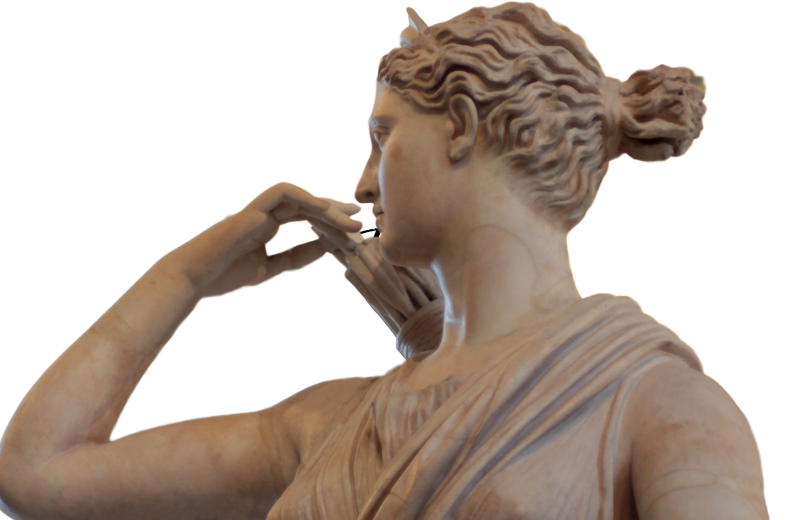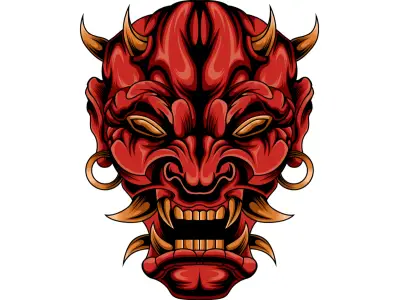Greek mythology is filled with fascinating tales of gods and goddesses, each with their unique stories and attributes. One such intriguing figure is Persephone, a central character whose story combines themes of love, abduction, and transformation. If you've ever wondered about the mythology of Persephone, her powers, and what she symbolises, you're in the right place.
Jump to:
Recommended for you!
Best SellersWho is Persephone?

Persephone is a significant deity in Greek mythology, known as the goddess of spring and the queen of the underworld. She is the daughter of Zeus, the king of the gods, and Demeter, the goddess of harvest and fertility. Persephone's dual role as a goddess of both the living world and the underworld makes her one of the most complex figures in Greek mythology.
What is Persephone the goddess of?
Persephone is the goddess of spring and the queen of the underworld. She represents growth, renewal, and the cycle of life and death.
Persephone's Myths
Persephone's myths are rich with themes of love, loss, and transformation. Here are some of the most significant stories that feature this fascinating goddess.
The Myth of Persephone and Hades
One of the most well-known Greek myths is about the story of Persephone's abduction by Hades, the god of the underworld. According to the myth, Hades fell in love with Persephone and decided to abduct her while she was picking flowers in a meadow. Despite her protests, Hades took her to the underworld to be his queen.
Heartbroken by the loss of her daughter, Demeter wandered the earth in search of her, causing the crops to wither and die. The earth experienced a severe famine as a result of Demeter's grief. Eventually, Zeus intervened and ordered Hades to release Persephone. However, because Persephone had eaten pomegranate seeds in the underworld, she was bound to return for a portion of each year. This myth explains the changing seasons: Persephone's return to the earth heralds spring and summer, while her descent to the underworld brings autumn and winter.
The Myth of Persephone and Adonis
Another lesser-known myth involves Persephone and Adonis, a handsome mortal loved by both Persephone and Aphrodite, the goddess of love. Adonis was killed by a wild boar, and his spirit descended to the underworld.
Both goddesses claimed him, leading to a dispute that was eventually resolved by Zeus. He decreed that Adonis would spend one-third of the year with Persephone in the underworld, one-third with Aphrodite, and the remaining third wherever he chose.
The Myth of Persephone and Ascalaphus
In this myth, Ascalaphus, the gardener of Hades, witnessed Persephone eating the pomegranate seeds and reported it, ensuring her stay in the underworld. Angered by his betrayal, Persephone transformed Ascalaphus into a screech owl, a symbol of death and the underworld.
The Myth of the Assault of Persephone
This myth is similar to the abduction story but places more emphasis on the violence of Persephone's kidnapping. In this version, Persephone is taken against her will, and her time in the underworld is portrayed as a period of suffering. Her eventual return to the surface is seen as a triumphant rescue, and her story serves as a symbol of hope and renewal.
Persephone’s Powers and Abilities

Persephone's powers are closely tied to her roles as the goddess of spring and queen of the underworld. Here are three important powers of Persephone:
- Growth and Renewal: As the goddess of spring, Persephone has the power to bring life back to the earth. Her return from the underworld each year signals the end of winter and the start of the growing season.
- Ruler of the Underworld: As the queen of the underworld, Persephone has dominion over the dead. She plays a role in the cycle of life and death, overseeing the souls of the departed.
- Transformation: Persephone's ability to move between the worlds of the living and the dead symbolises transformation and the cyclical nature of life. This duality is a powerful reminder of the interconnectedness of life and death.
Symbols of Persephone
Several symbols are associated with Persephone, each reflecting different aspects of her identity and mythology. Here are some key symbols:
- Pomegranate: The pomegranate is perhaps the most famous symbol of Persephone. It represents her bond to the underworld and the cycle of life and death. The fruit's seeds symbolise fertility and renewal.
- Torches: Often depicted carrying torches, Persephone uses them to light her way between the worlds of the living and the dead. This symbolises guidance and enlightenment.
- Spring Flowers: Flowers like the narcissus and the poppy are closely associated with Persephone. These flowers symbolise beauty, renewal, and the fleeting nature of life.
- Bat and Bat Wings: As the queen of the underworld, the bat is a symbol often linked with Persephone, representing darkness, mystery, and the unknown aspects of life.
Persephone's Relationships and Family Tree
Persephone's relationships and family connections provide a deeper insight into her role and significance within Greek mythology. Here's a look at her lineage and interactions with other deities.
- Parents: Persephone is the daughter of Zeus, the king of the gods, and Demeter, the goddess of harvest and fertility. Her divine lineage places her at the heart of the Olympian pantheon, highlighting her importance in both the mortal and divine realms.
- Husband: Persephone is married to Hades, the god of the underworld. Their relationship began with her abduction by Hades, but over time, she became the queen of the underworld, balancing her time between the underworld and the earth.
- Connection with Demeter: Demeter's deep love for her daughter is central to Persephone's story. Demeter's grief over Persephone's abduction caused a devastating famine, illustrating their strong bond and the importance of Persephone's presence on earth for the fertility of the land.
The Role of Persephone in Greek Religion and Culture

Persephone was worshipped throughout Greece, with numerous festivals and rituals dedicated to her and her mother, Demeter. The Eleusinian Mysteries, one of the most significant religious rites in ancient Greece, celebrated the myth of Persephone's abduction and her annual return to the earth. These mysteries were shrouded in secrecy but were believed to offer initiates insight into the afterlife and the promise of rebirth.
The Legacy of Persephone
Persephone's story has inspired countless works of art, literature, and philosophy. The themes of her myth—love, loss, renewal, and transformation—resonate deeply with human experiences. Artists like Gian Lorenzo Bernini have captured her dramatic abduction in sculptures, such as "The Abduction of Proserpina."
In modern times, Persephone continues to be a symbol of resilience and transformation. Her ability to navigate both the worlds of the living and the dead makes her a powerful figure of strength and adaptability.
Recommended for you!
Best SellersFrequently Asked Questions about Persephone
Did Hades love Persephone?
According to many myths, Hades loved Persephone deeply and treated her with respect as his queen.
Did Persephone have a child with Hades?
In some myths, Persephone and Hades are said to have had children, including Melinoe, the goddess of ghosts.
What is Persephone's role in the changing seasons?
Persephone's annual return to the earth heralds spring and summer, while her descent to the underworld brings autumn and winter, explaining the seasonal changes.
Why did Persephone eat pomegranate seeds?
Persephone ate pomegranate seeds because Hades tricked her into eating them. According to Greek mythology, consuming food from the underworld bound her to it. By eating the seeds, Persephone was required to return to the underworld for a portion of each year.
Did Persephone eventually love Hades?
Many myths suggest that Persephone grew to love and respect Hades, evolving into a powerful and influential queen alongside him.
What are the Eleusinian Mysteries?
The Eleusinian Mysteries were significant religious rites in ancient Greece that celebrated the myth of Persephone's abduction and her annual return to the earth, offering initiates insight into the afterlife and the promise of rebirth.
How does Persephone symbolise transformation?
Persephone's ability to move between the worlds of the living and the dead symbolises transformation and the cyclical nature of life, highlighting the interconnectedness of life and death.
Study Greek Mythology for £29
If you're fascinated by Persephone and want to learn more about Greek gods and goddesses, consider enrolling in the Greek Mythology Diploma Course at Centre of Excellence. This fascinating course takes you on a journey through Greek mythology, providing you with a deeper understanding of its characters and themes. For a limited time, you can get the course at a discounted price of £29.












